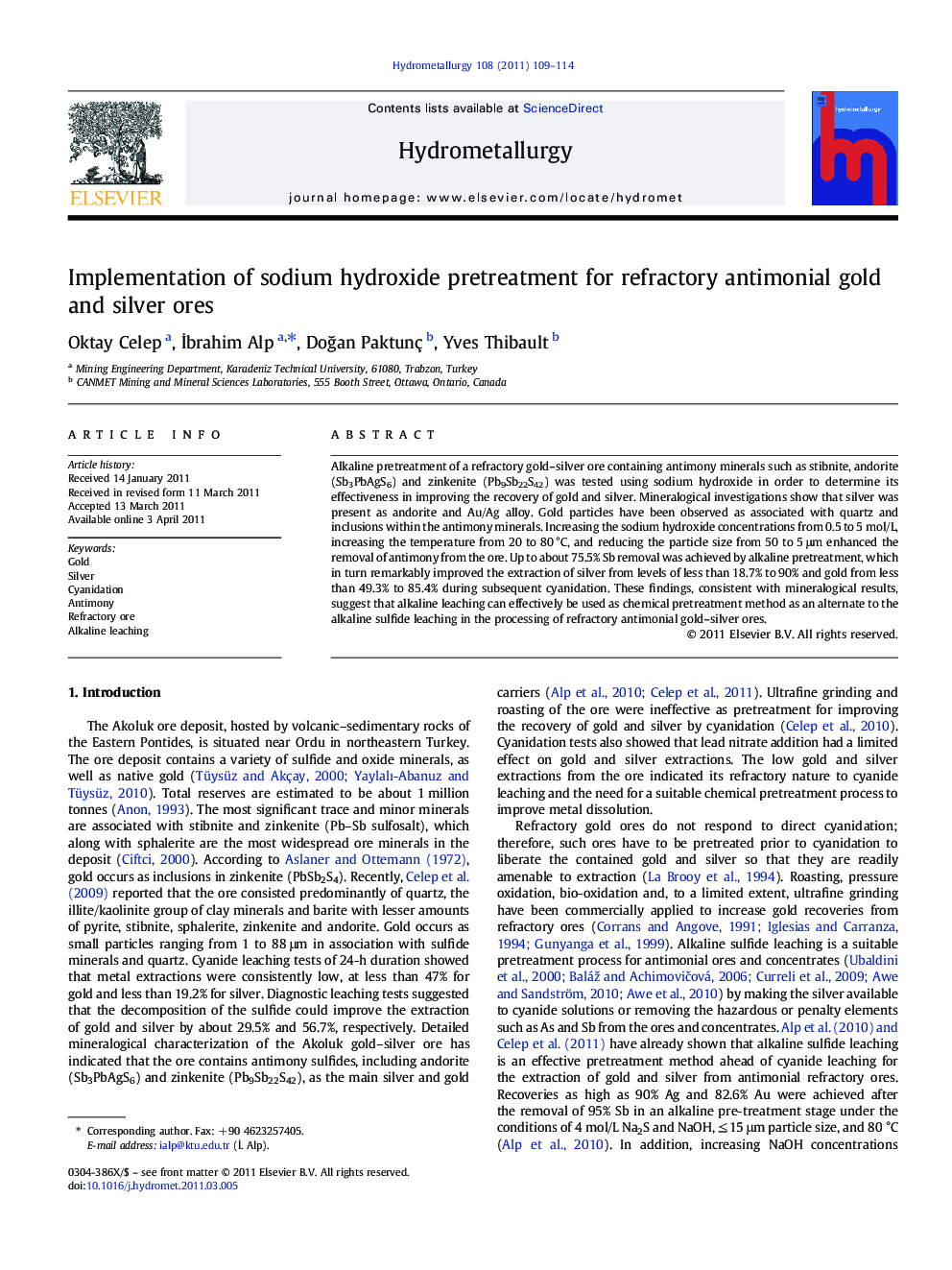| Article ID | Journal | Published Year | Pages | File Type |
|---|---|---|---|---|
| 212693 | Hydrometallurgy | 2011 | 6 Pages |
Alkaline pretreatment of a refractory gold–silver ore containing antimony minerals such as stibnite, andorite (Sb3PbAgS6) and zinkenite (Pb9Sb22S42) was tested using sodium hydroxide in order to determine its effectiveness in improving the recovery of gold and silver. Mineralogical investigations show that silver was present as andorite and Au/Ag alloy. Gold particles have been observed as associated with quartz and inclusions within the antimony minerals. Increasing the sodium hydroxide concentrations from 0.5 to 5 mol/L, increasing the temperature from 20 to 80 °C, and reducing the particle size from 50 to 5 μm enhanced the removal of antimony from the ore. Up to about 75.5% Sb removal was achieved by alkaline pretreatment, which in turn remarkably improved the extraction of silver from levels of less than 18.7% to 90% and gold from less than 49.3% to 85.4% during subsequent cyanidation. These findings, consistent with mineralogical results, suggest that alkaline leaching can effectively be used as chemical pretreatment method as an alternate to the alkaline sulfide leaching in the processing of refractory antimonial gold–silver ores.
Graphical abstractFigure optionsDownload full-size imageDownload as PowerPoint slideResearch highlights► Cyanide leaching resulted in low extraction of gold (49%) and silver (18%). ► Zinkenite and andorite phase responsible for the refractoriness. ► Alkaline treatment leaches out up to 75% Sb from the ore. ► Subsequent cyanide extractions improved up to 90% Ag and 85% Au.
